
Are you ready to experiment with mixing metals in your home? This design trend is all about creating a dynamic, layered look by combining different metal finishes. With the right balance, mixing metals can elevate your space to a whole new level of style and sophistication.
Where Cold Meets Warm: Why Mix Metals
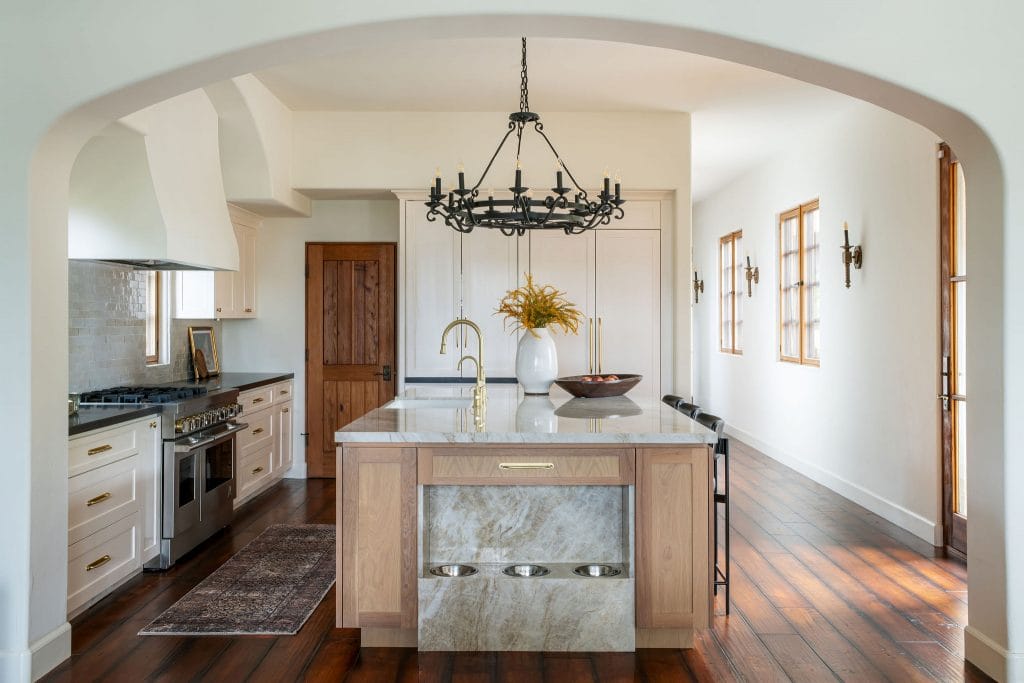
- Mixing metal decor supports spatial depth in stylish interiors by layering finishes
- The combination strengthens material definition through visible variation in surface and tone
- It can coordinate architectural and decorative fixtures
- Mixing metals allows hardware, lighting, and plumbing to perform individually while belonging to the whole composition
Pro Tip: Mixing metals works in any design style. Not sure what yours is? Try our Free Interior Design Style Quiz to discover your ideal style today!
Easy Tips for Mixing Metals
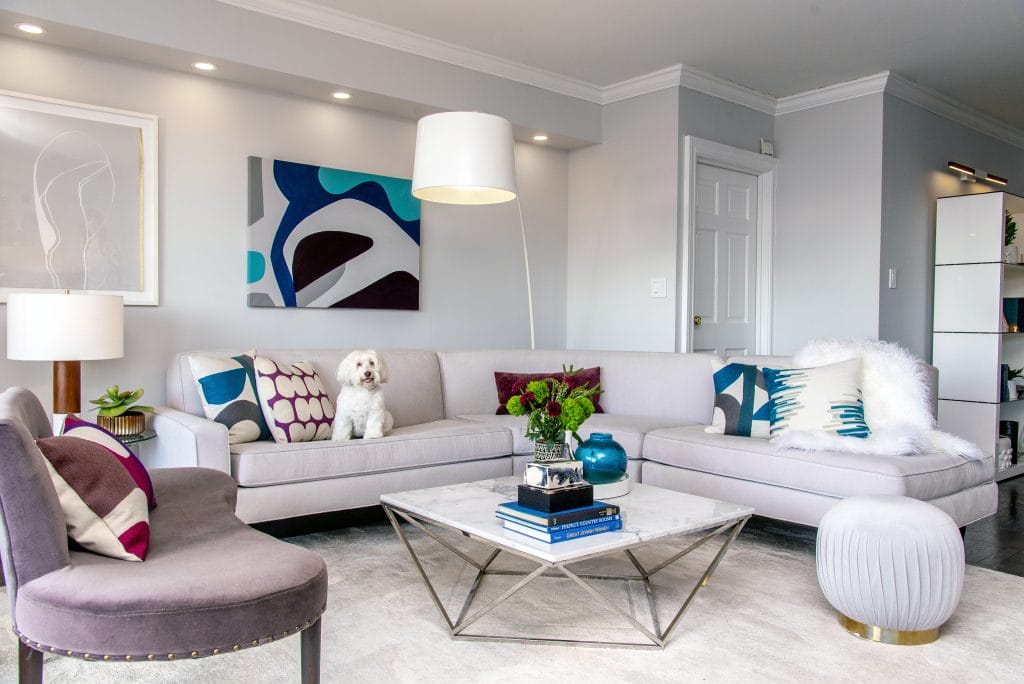
From industrial to glam interiors, every finish in the room should tie back to how it’s touched, mounted, or seen in sequence. Here’s how to build alignment across elements that goes beyond mere decorating.
1. Let Lighting Cross Boundaries
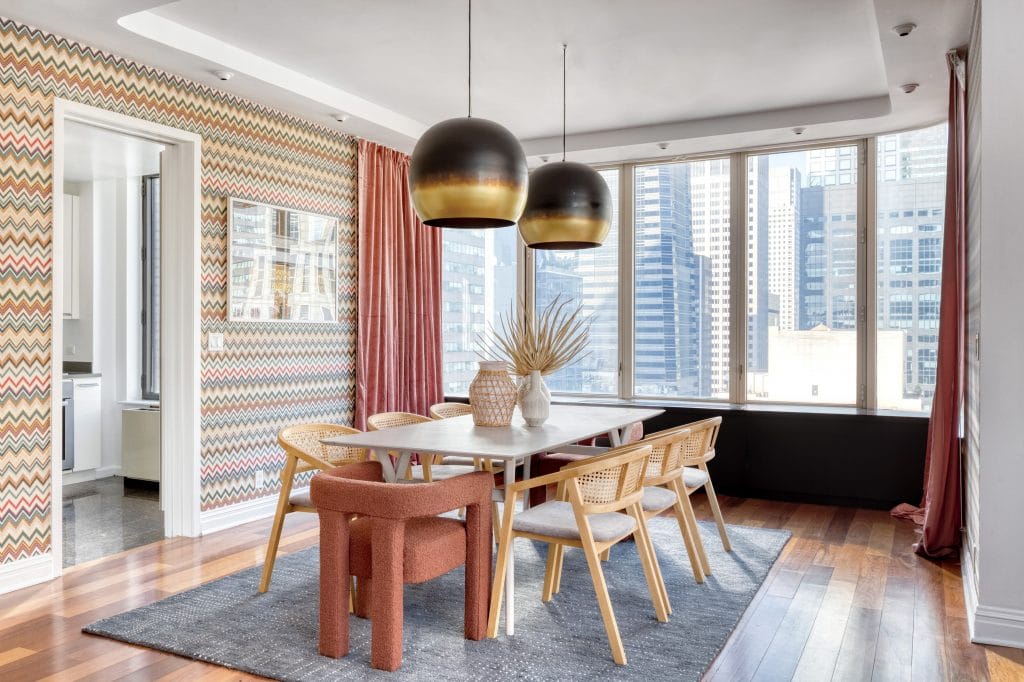
Lighting can carry two finishes when placed where materials shift. That could be where dark millwork meets pale wall tile or where a metal handrail turns into painted plaster. Or, you could hang a mixed metal chandelier over a table where the surrounding cabinetry and walls use different metals. Above a bench, at a stair landing, or across a hallway end, a fixture reads with both what’s below and what’s across.
Pro Tip: Select lighting that complements two distinct materials in sight—its finish should echo one and contrast the other in texture or tone.
2. Employ Texture to Carry Weight
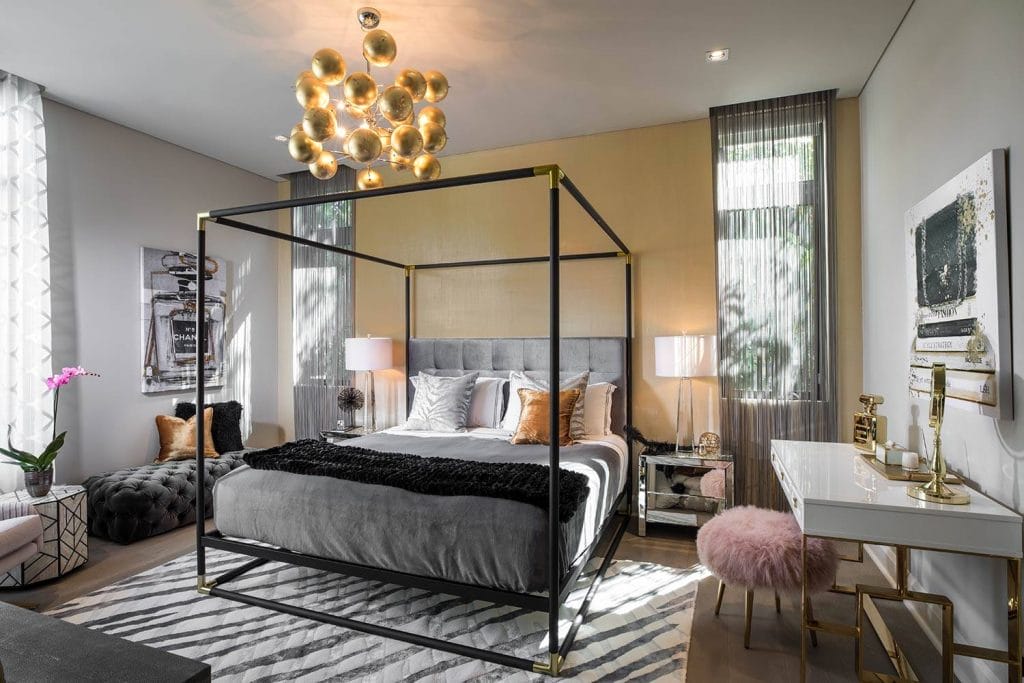
Use texture shifts to define finish boundaries when the tone is similar. These combinations create visible breaks without needing color contrast, which makes them perfect for shaking things up in neutral or minimalist spaces. A polished chrome faucet paired with a brushed stainless handle reads as two distinct objects because their surface responses differ under light. You could also pair an antiqued brass pendant with satin brass knobs to split the field and function in the kitchen cleanly.
Pro Tip: Use the finish with the most grain or resistance where hand contact is frequent. It will conceal wear better.
3. Define the Anchor Finish
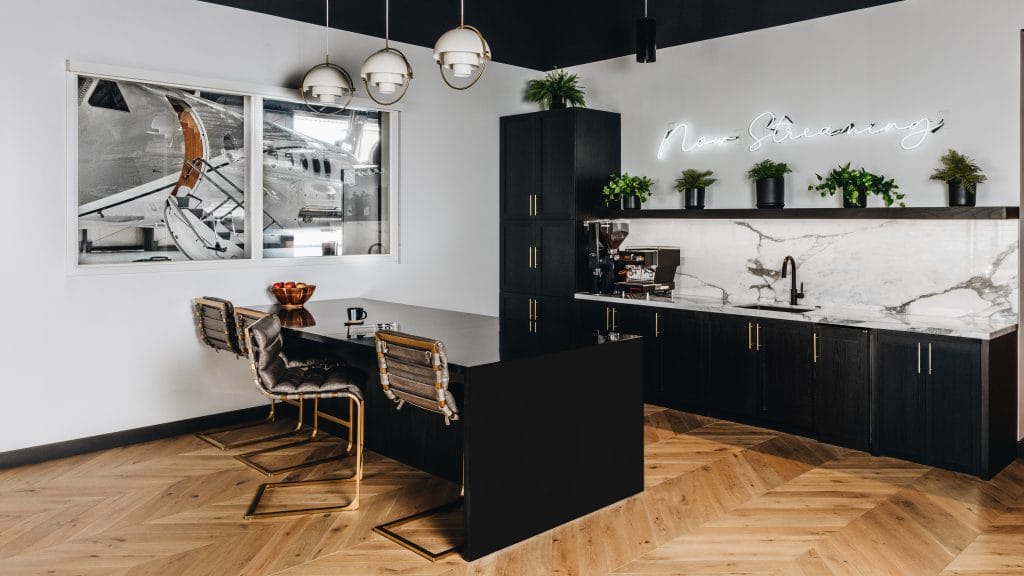
There’s a simple base logic for mixing metals, especially in bathrooms and kitchens. The anchor finish sits at the architectural level—usually faucets, door hardware, or cabinet pulls. Select a tone with a visible material grain or oxide depth. Use matte black, oil-rubbed bronze, or brushed brass to establish a field that secondary metals respond to.
Pro Tip: Stick to one anchor finish across permanent fixtures, then layer smaller items in other metals.
4. Establish a Temperature Field
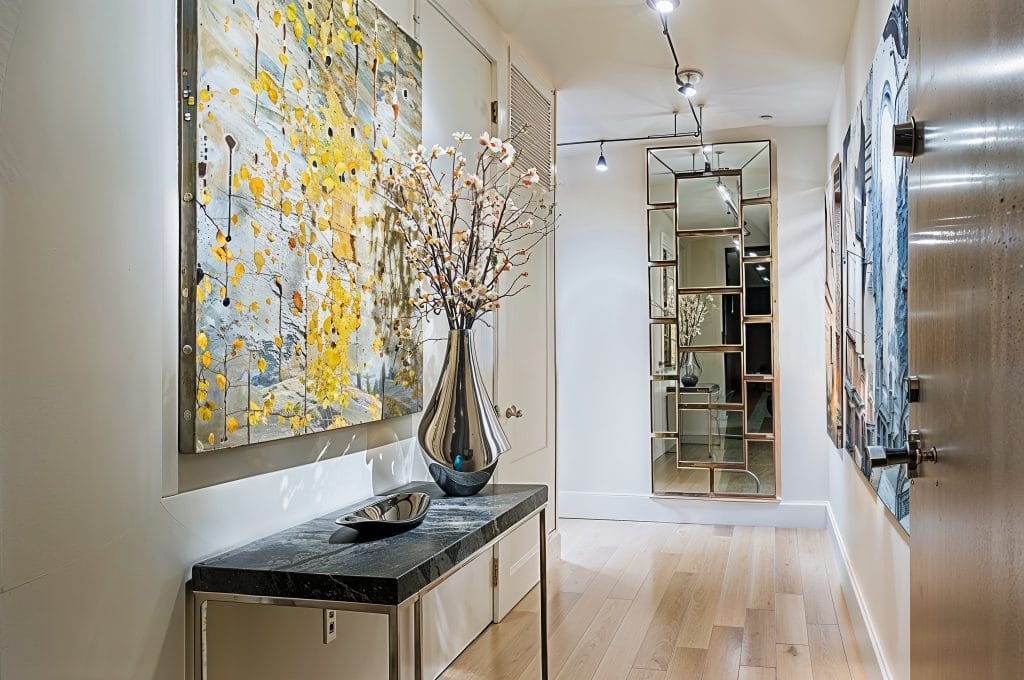
Choose one dominant temperature and repeat it across major hardware. Warm tones like brass and bronze group well; similarly, cool ones like chrome and nickel stay together. In mixing metals in bathroom layouts, stick with one temperature for plumbing and a second for accessories. This lets each zone read clearly while still allowing accessories to shift in tone where the layout supports it.
Pro Tip: Temperature reads stronger than tone—always map that first.
5. Zone by Function When Mixing Metals
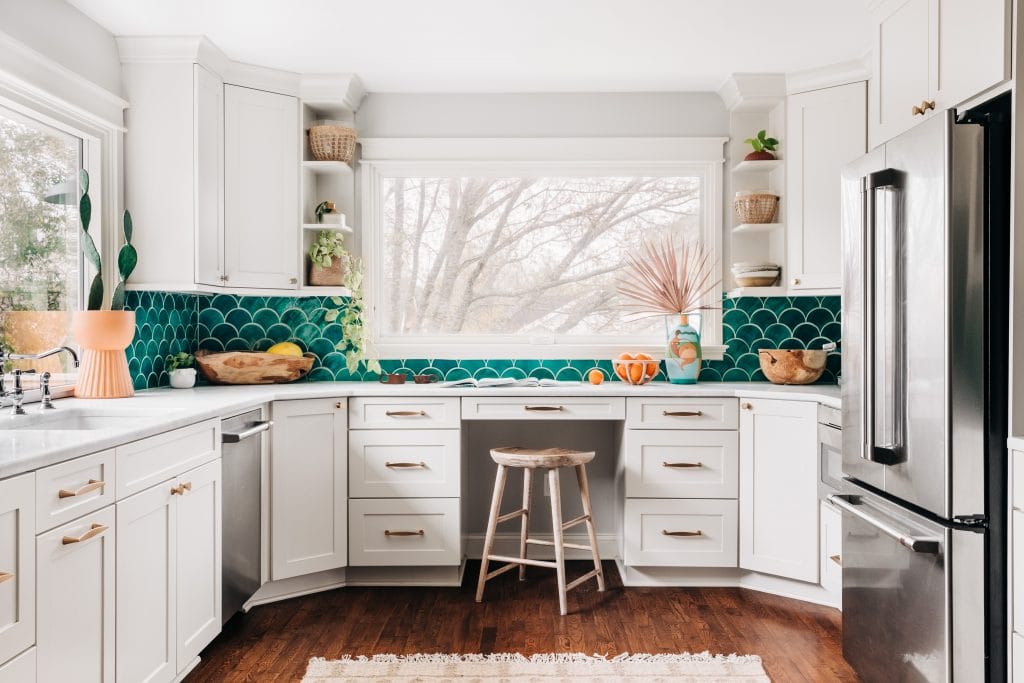
Functional zones in homes are typically structured by adjacency and sequence of use. In terms of mixing metal, finishes should align where functions overlap. In a kitchen, for example, you could hang pendant lights in burnished brass over an island where the faucet is black. Mixing finishes in a bathroom follows the same idea—assign one finish to plumbing and use another for wall fixtures such as towel bars or mirror frames.
Pro Tip: Track how the hand moves through space. Touchpoints will help you determine where metal shifts make sense.
6. Break Up Mass Through Detail
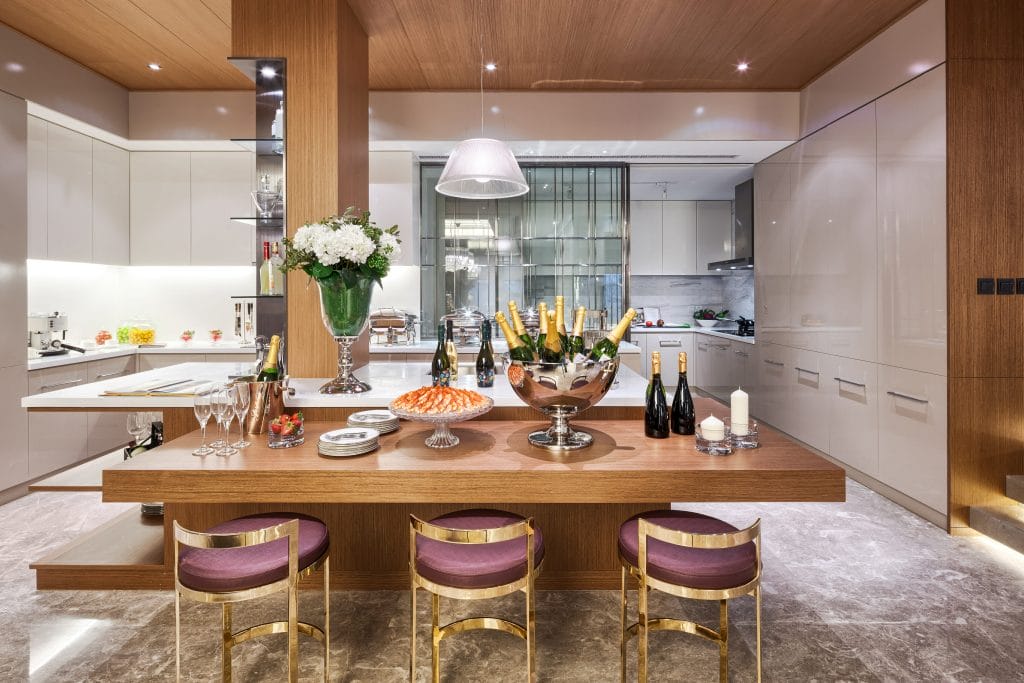
Apply a different finish to features that interrupt a large surface. These small breaks define edge conditions and reduce visual weight. In kitchens, this can be appliance handles, open shelf brackets, a toe-kick vent, or mixed metal decor on the island. In bathrooms, consider using a separate metal on the mirror frame or vanity legs.
Pro Tip: Treat finish breaks as material seams—use a different metal where a part is built separately, fastened differently, or added late.
7. Recur with Spacing Logic
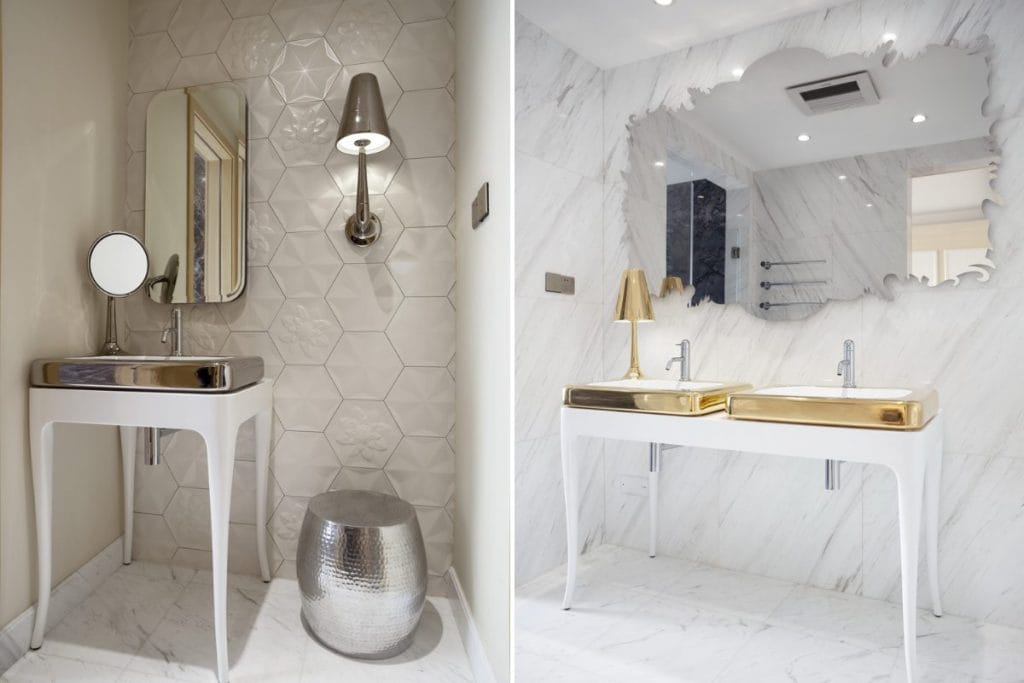
Modern bathroom interior by Decorilla designer, Sergio M.
Each finish should appear more than once, but never in a sequence that feels patterned. Keep in mind that distance and spacing matter here more than number. You can install a brass pull on one bank of drawers and repeat it on a vent hood bracket across the room. Likewise, a black towel hook and a black sconce can belong to the same group if they’re placed at different depths or serve different zones.
Pro Tip: Place each metal finish in at least two separate zones for balance.
8. Reference the Ceiling as the Field
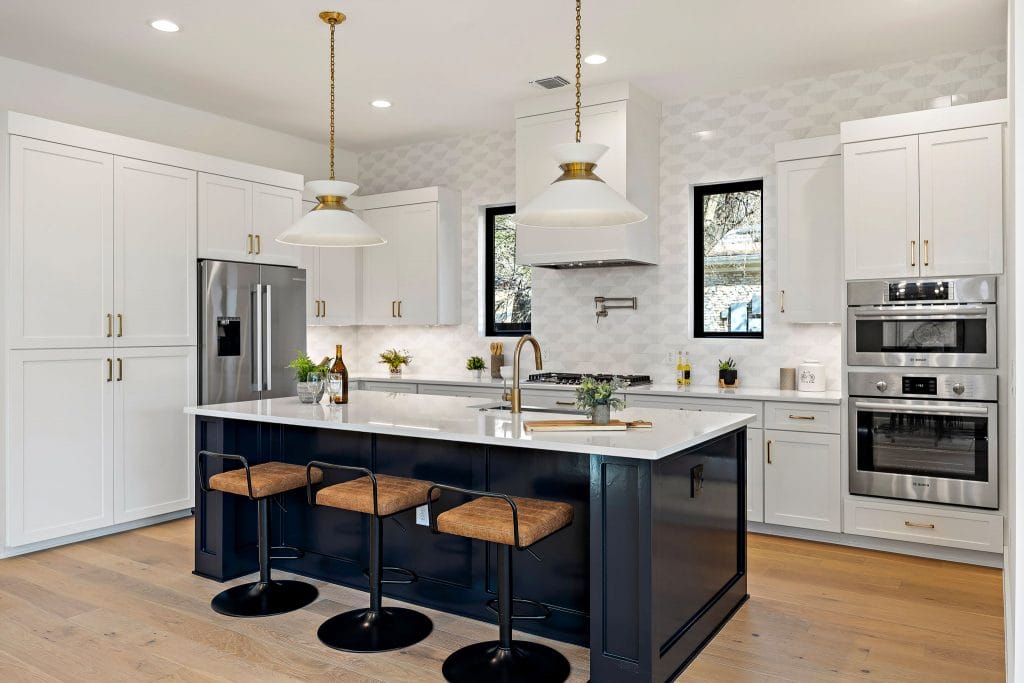
Use ceiling fixtures to extend an existing material system upward. Think metal used at the top line of built-ins, tile stops, or casing returns. If the trim and cabinetry are black or brass, the installations overhead can repeat one of those finishes to cap the field. If no other metals reach that height, keep the fixtures neutral—white, painted, or powder-coated steel.
Pro Tip: Treat the ceiling as part of the finish composition and match visible ceiling hardware.
Need help mixing metals in your home?
Hire a top interior designer to perfect the look. Book your Free Online Interior Design Consultation to get started today!









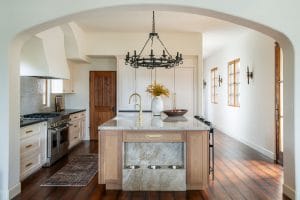
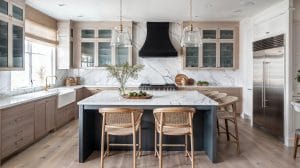

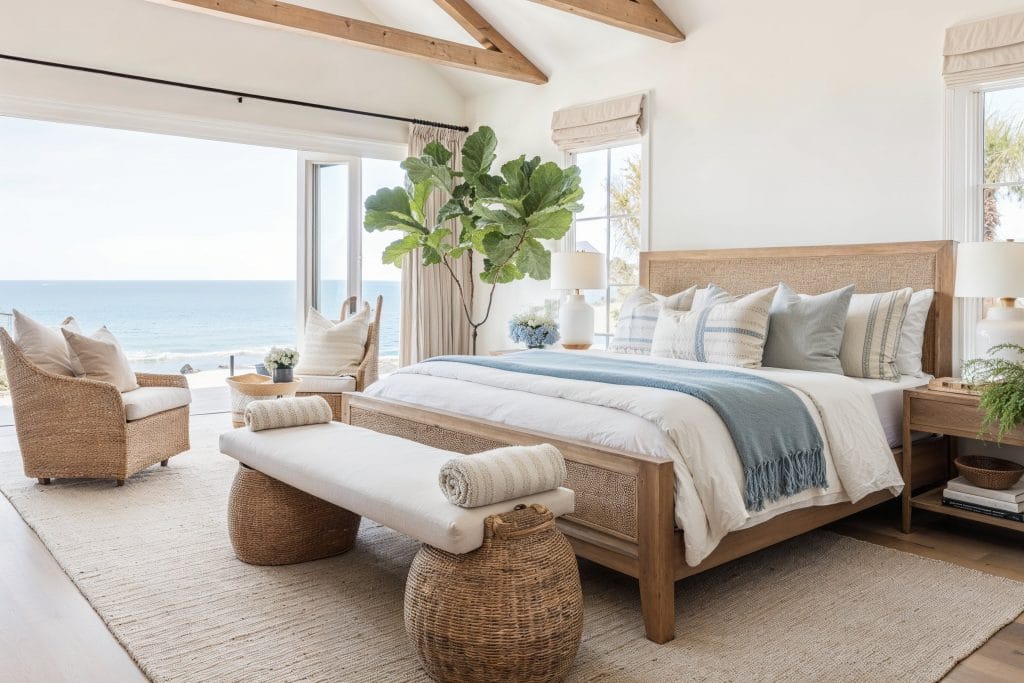
Comments